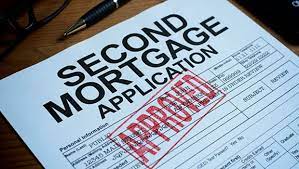3 min read

The journey of being self-employed is often filled with excitement and innovation, but it also comes with its unique set of challenges. One such challenge is accessing financial resources, such as a loan or credit, which can be a crucial tool for growth. Traditional banks often require a steady paycheck, something that doesn't always align with the ebb and flow of self-employment income. For many, the solution lies in a Home Equity Line of Credit (HELOC). Today, we will dive into the ins and outs of self-employed HELOC and how it can act as a key tool for your financial toolkit.
Apply for your self-employed HELOC here: https://trussfinancialgroup.com/no-doc-heloc
What is a HELOC?
A Home Equity Line of Credit (HELOC) is a type of loan that allows homeowners to borrow against the equity they've built in their home. Equity is the difference between the current market value of your property and the amount you still owe on your mortgage. A HELOC acts similarly to a credit card: you have a set credit limit that you can borrow against as needed, and you only pay interest on the amount you use. This flexibility makes it a popular option for those seeking funding for major expenses.
Benefits of a HELOC for Self-Employed Individuals
Being self-employed often means a fluctuating income. A HELOC provides a flexible financial buffer to balance out these highs and lows. You can draw from it in leaner months and pay it back when business is booming. Here are some benefits that make a HELOC an appealing option:
1. Flexibility: Unlike a traditional loan, a Stated Income HELOC gives you the flexibility to borrow as little or as much as you need (up to your credit limit), and to repay it on your schedule.
2. Low Interest Rates: Compared to credit cards and personal loans, HELOCs often have lower interest rates because your home secures the loan.
3. Tax Deductions: Depending on your circumstances, the interest you pay on a HELOC might be tax-deductible if you use the funds for home improvements. However, it's best to consult with a tax professional before making any decisions based on this potential benefit.
Securing a HELOC as a Self-Employed Individual
For self-employed individuals, obtaining a HELOC can be a little more complex than for those with traditional employment. Lenders typically like to see steady income, but there are ways to demonstrate financial stability outside of a standard paycheck.
1. Documentation: You might need to provide more documentation than a traditionally employed borrower. This may involve providing bank statements so that the bank can review your deposit history.
2. Credit Score: A strong credit score can significantly boost your chances of approval. It tells lenders that you're responsible with your financial commitments.
3. Home Equity: You need sufficient equity in your home. The more equity you have, the larger the line of credit you might be able to obtain.
4. Debt-to-Income Ratio: Lenders will carefully review the deposit history on your bank statements to determine your estimated stated income. A lower DTI ratio is better.
5. Professional Assistance: It can be helpful to work with a mortgage broker or financial advisor who has experience in securing loans for self-employed individuals. They can help navigate the process and improve your chances of approval.
Table of Content

Take your pick of loans
Experience a clear, stress-free loan process with personalized service and expert guidance.
Get a quote


